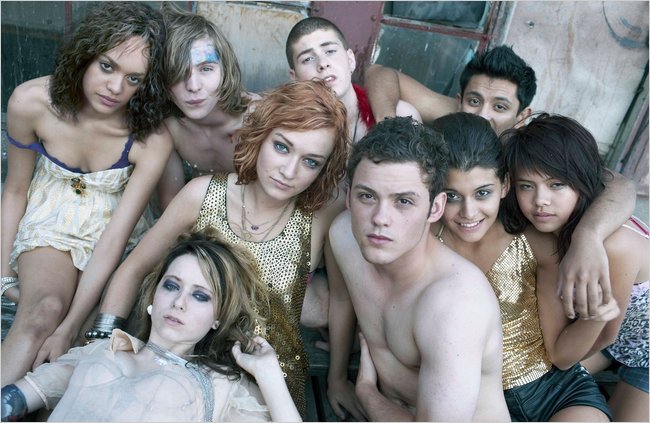A stressed-out teenager impetuously checks himself into a mental hospital in this semi-autobiographical tale based on It’s Kind of a Funny Story by Ned Vizzini. It is brought to screen by the talented writer-directing team of Anna Boden and Ryan Fleck, who have demonstrated their understanding of teenagers struggling with difficult situations in the understated “Sugar” and “Half Nelson.” Here, they show a more playful side, with witty and imaginative fantasy sequences that make the unabashed decency and kindness at its heart even more touching.
by Ned Vizzini. It is brought to screen by the talented writer-directing team of Anna Boden and Ryan Fleck, who have demonstrated their understanding of teenagers struggling with difficult situations in the understated “Sugar” and “Half Nelson.” Here, they show a more playful side, with witty and imaginative fantasy sequences that make the unabashed decency and kindness at its heart even more touching.
Keir Gilchrist plays Craig, a 16-year-old student at a Manhattan high school for high-achievers. He is feeling a great deal of pressure to succeed and frightened by thoughts of suicide. He visits the emergency room and when the doctor tells him he can go home, he pleads to be admitted, not understanding that it will mean he must be kept under observation for five days. “I thought you guys could do something quick,” he says. “I have school tomorrow.” Craig also does not realize that the area where the teenagers are treated is being renovated, so he will be staying on the adult ward.
Immediately dubbed “Cool Craig” by a friendly patient named Bobby (Zach Galifanakis of “The Hangover”), Craig discovers a through-the-looking-glass world that challenges the connections and assumptions of his “normal” life. The kind psychiatrist (Viola Davis) immediately recognizes that all Craig needs is some breathing room and reassurance. That gives Craig a chance to look around. He develops confidence when he sees many people far worse off than he is, and when he sees that he can give and accept help. Art and music therapy help him think of what he can express instead of how he will be evaluated. And a pretty fellow patient (Emma Roberts, with her aunt Julia’s lovely smile) is the best medicine of all.
Boden and Fleck, whose previous films had an understated naturalism, make the most of the heightened sensibility of the mental ward setting with sequences that take us inside Craig’s fantasies and memories. In one, we see Craig remembering an incident when he was five, drawing inside a tent in his parents’ living room. The present-day Craig is shown as a five year old, and then in his teen-age persona in the five-year-old’s pajamas. When pushed into being the vocalist in music therapy, Craig swings into a deliriously Bowie-fied version of “Under Pressure.” Boden and Fleck continue to show skill in casting and directing. Gilchrist, Roberts, and Zoe Kravitz as the classmate Craig wishes he could date are all first-rate, and Galifanakis leaves every bit of his stand-up persona behind to give a real performance with subtlety and grace.
It is a relief to see a movie about mental illness that recognizes the real pain but focuses on the real humanity of everyone involved, patients, staff, and Craig’s family. Craig first comes into the emergency room and tells the intake nurse that he wants to kill himself. When she hands him a clipboard and tells him to fill out a form it comes across not as callous but as reassuring. Treating his fear as routine is part of what makes him feel safe there. Boden and Fleck are now among the most reliable and promising film-makers around.
(more…)



